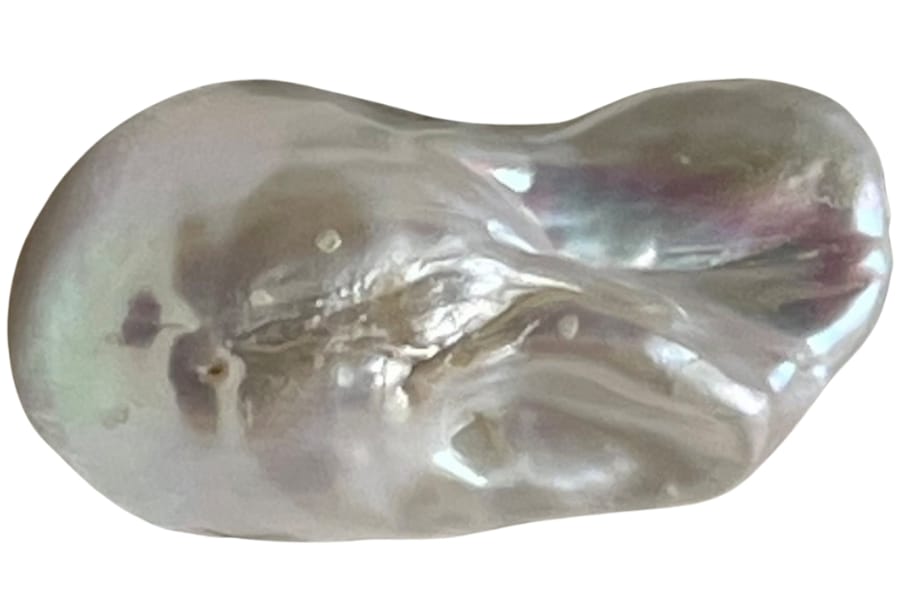Anyone interested in rocks, minerals, and gems will find Kentucky, well-known for its rolling bluegrass hills and thundering horse hooves, a treasure trove.
They are not only beautiful, but they also tell stories about the state’s geological past. The amazing thing about this is how different they are.
The state’s underground jewels come in a lot of different types. A piece of fluorite, the state gemstone, might look like a piece of the night sky, or you might find quartz that sparkles like a tiny star. Each find is different and has a story from millions of years ago.
This article tells you about all the rocks, gems, and minerals you can find in Kentucky. From the common to the rare, each has its charm.
So, let’s explore Kentucky’s hidden gems and uncover their secrets. It’s a real paradise for people who are interested in nature!
A List of The Common Rocks, Stones, and Minerals Found in Kentucky
Here are some of the most well-known rocks and gems in the state. To read the full guides, which are very detailed, click on the links below:
The Kentucky State Rock, Mineral, and Gem
This is a list of Kentucky’s official state treasures.
| Kentucky State Rock | Kentucky Agate |
| Kentucky State Mineral | Coal |
| Kentucky State Gem | Freshwater Pearls |
To find out more about Kentucky’s geology policy, go to the website of the Kentucky Department of Fish and Wildlife Resources (KDFWR).
Always Confirm Access and Collection Rules!
Before heading out to any of the locations on our list you need to confirm access requirements and collection rules for both public and private locations directly with the location. We haven’t personally verified every location and the access requirements and collection rules often change without notice.
Many of the locations we mention will not allow collecting but are still great places for those who love to find beautiful rocks and minerals in the wild without keeping them. We also can’t guarantee you will find anything in these locations since they are constantly changing.
Always get updated information directly from the source ahead of time to ensure responsible rockhounding. If you want even more current options it’s always a good idea to contact local rock and mineral clubs and groups
Diopside
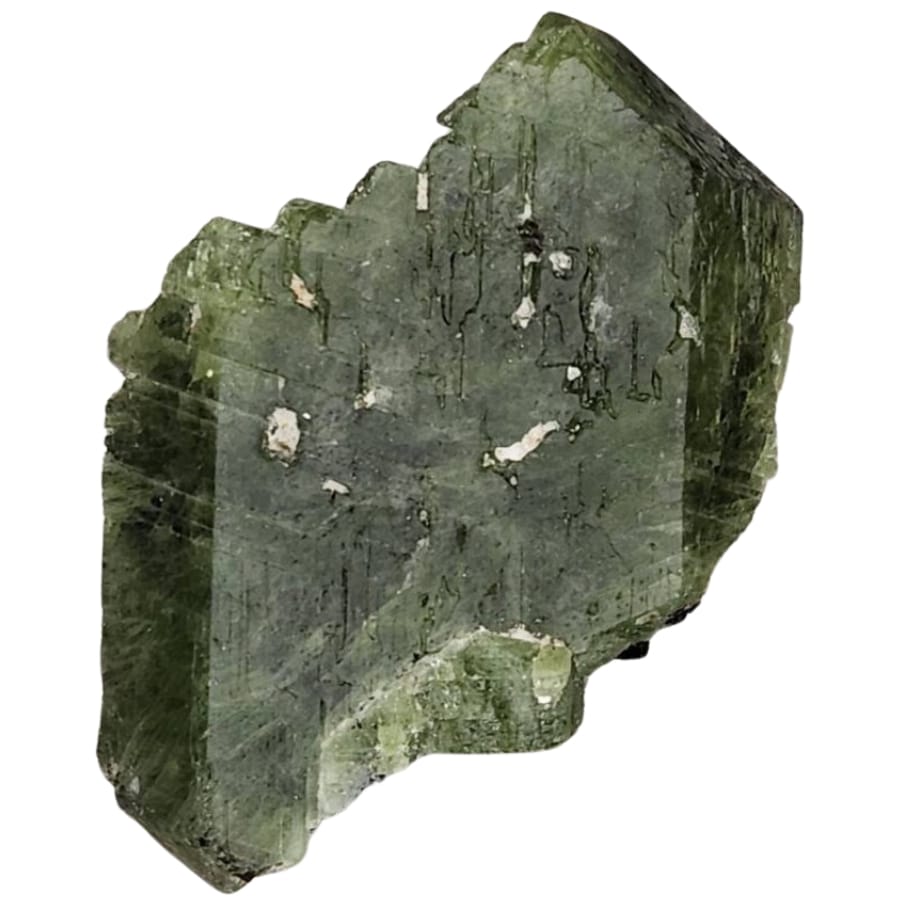
Diopside is an exciting mineral that stands out because of its bright green color. The Earth’s crust is full of mineralsm, called pyroxene crystals. It can be any color from light to dark green,.
Sometimes it has a hint of blue or black as well. As a result, it doesn’t scratch easily and is pretty hard. It also splits into two smooth surfaces in two completely straight lines.
The word “diopside” comes from the Greek words “di” which means “two” and “opsis” which means “appearance.” There are different ways to look at diopside crystals, which is why this name was picked.
It’s made deep underground, where the temperature and pressure are very high. It’s also often found with garnet, peridot, and other gemstones. Diopside can have chromium in it, which turns it a bright green color that makes it look even more beautiful.
There are several reasons why people like diopside. It’s often used in jewelry to make gems for rings, pendants, and others. Diopside is something that is used in fashion, but is also important to the study of rocks.
Where you can find Diopside in Kentucky
These are the areas where you can find diopside in the state:
- Elliott County
- Little Sandy River
Serpentine
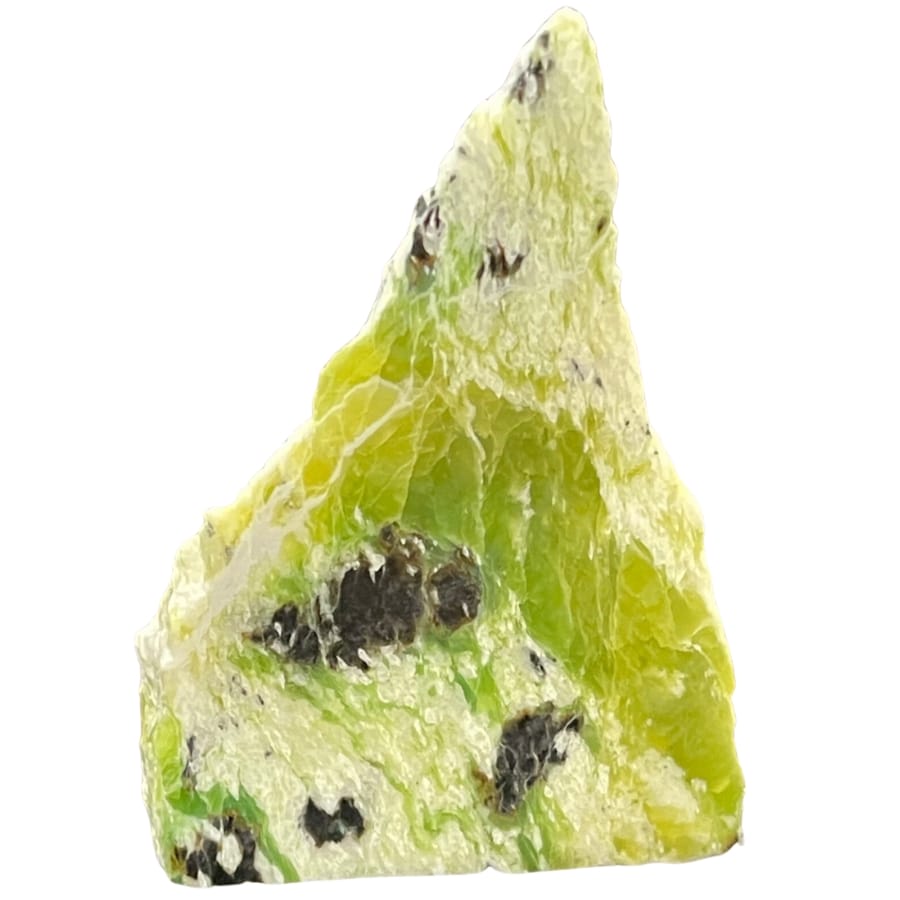
Serpentine is an interesting and one-of-a-kind material that looks like a green snake, which is how it got its name. The word “serpentine” comes from the Latin word “serpentinus,” which means “serpent stone.”
Their name comes from their skin being often green and scaly, making it look like snake skin. It isn’t just one mineral, though; it’s a group of related minerals with some of the same properties, like the color and the way they’re made.
It comes in different shades of green, from light to dark, and it may even have spots or patterns on it. It’s often found in places where the Earth’s surface has been changed a lot by heat and pressure. Geologists call these places “metamorphic terranes.”
For a long time, people have loved serpentine, both for its beauty and for its valuable properties. It has been used for decorative carvings, sculptures, and building parts because it is pretty soft and easy to cut.
Serpentine is used to make jewelry and other decorative items. It isn’t just used for art and decoration; it also has practical uses. It has been used in factories to stop fires and line brakes, among other things.
Where you can find Serpentine in Kentucky
The following places are where you can find serpentine in the state:
- Elliott County
- Ison Creek
Sphalerite
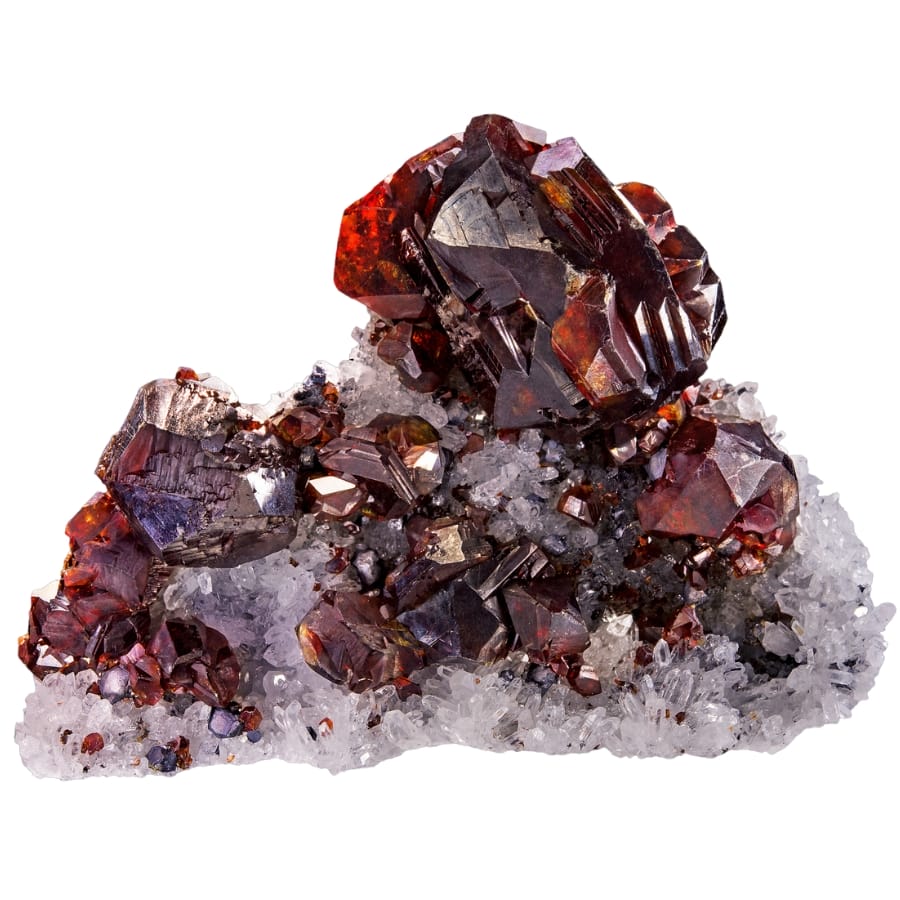
Sphalerite is known for being the main source of zinc. Some of it is yellow, brown, or red, while most is a dark shiny color. It’s pretty unique because it has a high dispersion, meaning it can scatter light to create a rainbow-like effect.
The Greek word “sphaleros,” which means “lying,” is where the name “sphalerite” comes from. This name was chosen because sphalerite is not always easy to spot. Sometimes, it resembles other crystals, and some light can change color.
In different places, sphalerite normally forms in rocks like dolomite and limestone that have been changed by hot fluids high in minerals. These liquids come from deep inside the Earth and carry the materials needed to make sphalerite.
Sphalerite is very valuable because it’s the main source of zinc, which is used in many everyday items. Zinc is needed to make brass, a mix of copper and zinc.
It’s also used to protect other metals from rusting by galvanizing them. In other words, we wouldn’t have many of the metal goods we use without sphalerite.
Some of these crystals are sometimes cut into gems in addition to their practical uses. You don’t see these stones often, but they are very pretty and can be used to make jewelry.
Where you can find Sphalerite in Kentucky
Here is where you can find sphalerite in the state:
- Columbia Mine
- Crittenden Springs Fault
- Hickory Cane Mine
- Kentucky River
- Old Jim Mine
The Gemstones Found In Kentucky
Let’s talk more about the gems of Kentucky. If you want a full guide, we’ve also put together a list of our most in-depth articles:
Anglesite
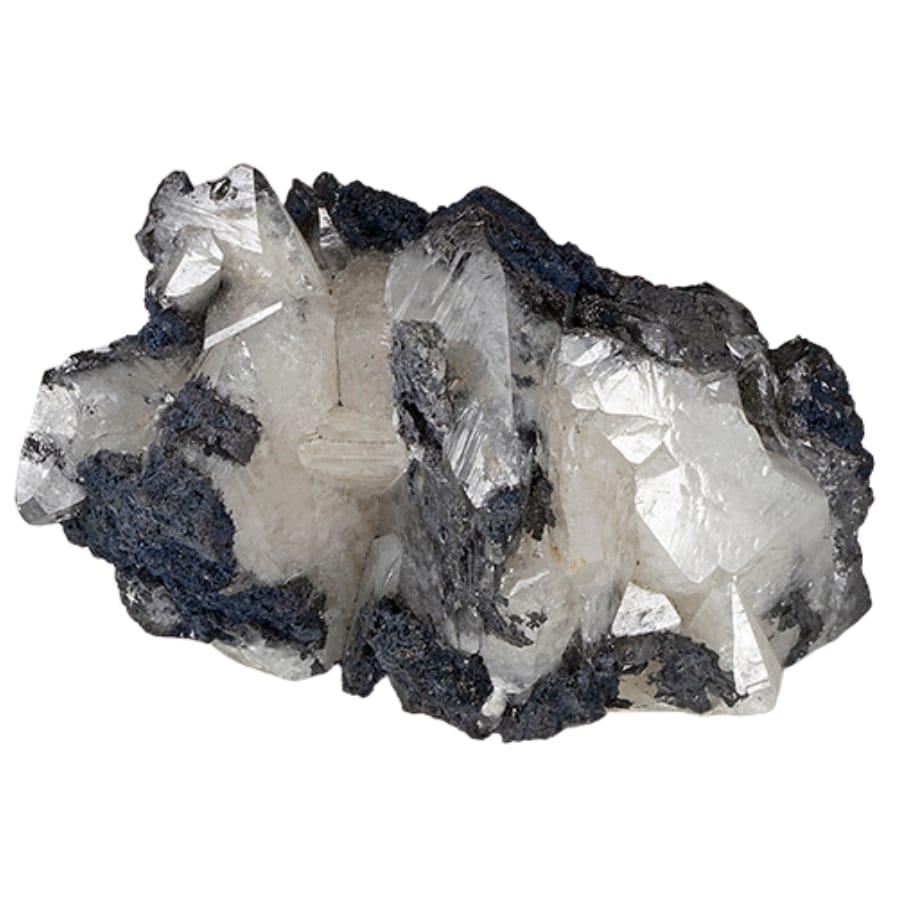
Anglesite is a unique gem renowned for its fine shine and perfect clarity. It often has no color or is neutral, white, gray, or even pale yellow. It shines and sparkles when light hits it.
This element is pretty heavy for its size, which helps you figure out what it is. Crystals of this type can be very big and are often made like cubes or prisms.
Angelsey, an island off the coast of Wales, is where it was first found, which is where the name “anglesite” comes from. Minerals like this are made from galena, which is the main natural source for lead.
If you put oxygen and sulfuric acid on galena, it turns into anglesite. This usually happens where lead is mined, which means that it’s often found in old mines that have been closed down.
Where you can find Anglesite in Kentucky
These are the places where you can find anglesite in the state:
- Big Four Fault
- Hickory Cane Mine
Apatite
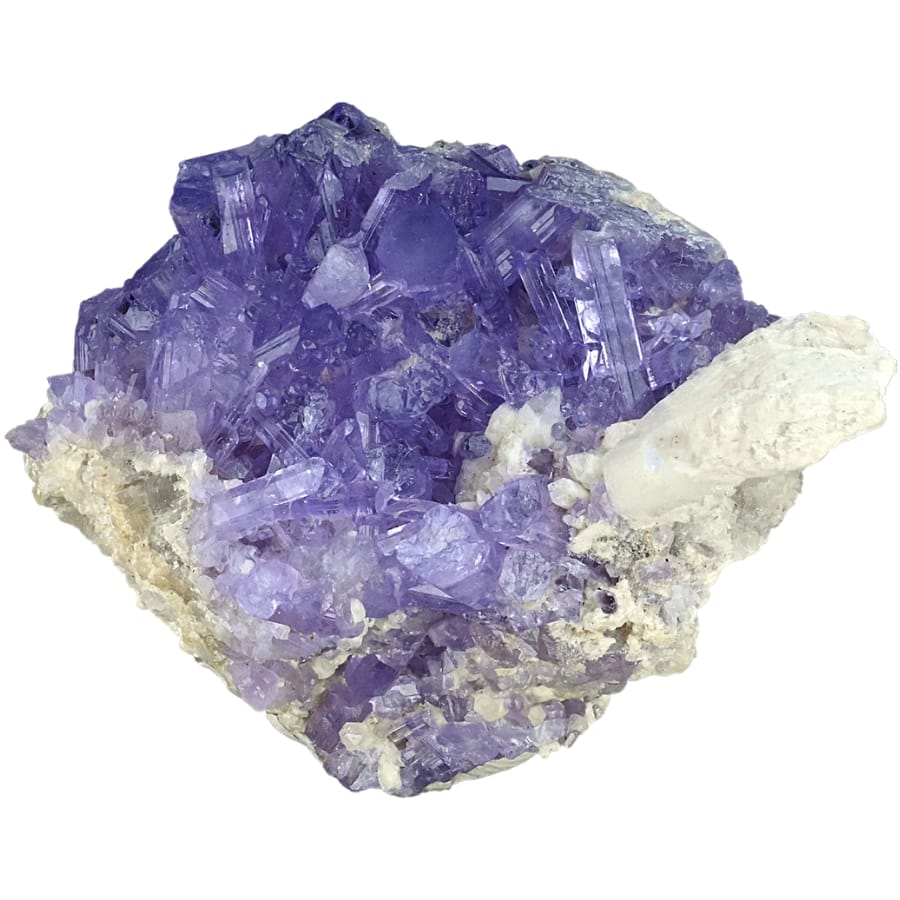
Apatite is a fascinating gemstone that comes in a lot of different colors. It comes in almost every color of the rainbow, from bright blues and greens to deep yellows and even purples.
It can also be different sizes and forms, but they are most often found as hexagonal prisms. Even though apatite is very pretty, it’s not as hard as some other rocks that are used in jewelry. This means that it’s easy to scratch.
It gets its name from a Greek word that means “to trick” because of how easily it can be confused for other minerals like tourmaline or beryl because it comes in so many colors.
Apatite can be found in many different types of natural settings. It can be found in igneous rocks, made when lava or magma cools down.
It’s also found in metamorphic rocks (rocks that have been changed over time by heat and pressure) and sedimentary rocks (rocks that are made up of pieces of other rocks and organic matter).
There are several reasons why apatite is important. Because it’s so soft, it’s not used as much in jewelry, but some high-quality bits are cut into gems and put in necklaces, bracelets, and other accessories.
The most important use of apatite, though, is in farming. Phosphorus is an important element for plant growth, and apatite is a good source of it.
It’s often broken down and put on plants to help them grow. In this way, apatite is not only a lovely mineral to look at, but also a useful tool for growing and making food.
Where you can find Apatite in Kentucky
One of the many places you can locate apatite is the Little Sandy River.
Barite
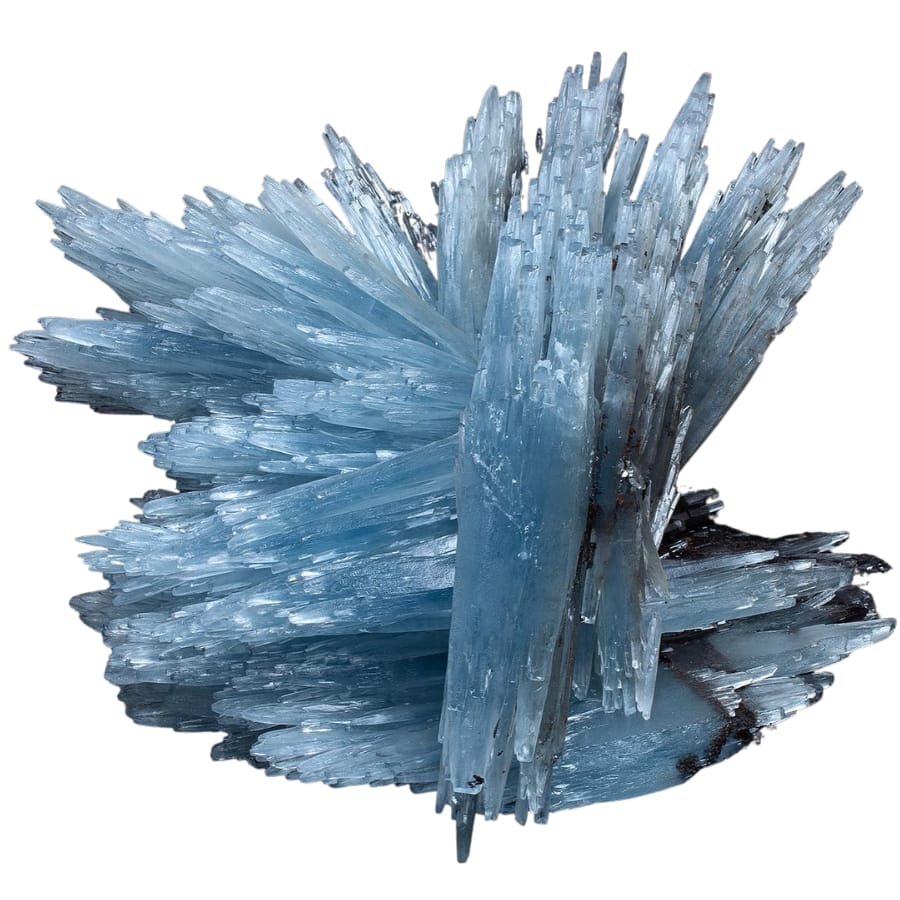
Barite is known for having a lot of different colors and a high density. Light blue, green, yellow, white, and sometimes even clear are some of the colors it comes in. It can look like blades or thin, flat plates when it forms into long crystals.
Its very heavy, which is one of its most interesting traits. Small pieces of barite are much heavier than other materials the same size, even though they might not look that way.
This mineral is called barite, which comes from the Greek word “baros,” which means “heavy.” Hot springs or the cracks and spaces in limestone and other geological rocks are common places where it forms.
Along with minerals like quartz and calcite, it can also be found in underground layers of rocks. The fact that it’s very soft and easy to scratch makes it less common to use in jewelry.
That being said, it’s very useful in many situations. Gas and oil companies use barite a lot. For safety reasons, it’s mixed with drilling fluids to make them heavier and less likely to blow out.
This is very important to keep oil drilling safe and efficient. Barite is also used to make paint, rubber, plastics, and as a contrast agent in x-rays for medical purposes.
Where you can find Barite in Kentucky
Barite deposits are abundant in these areas:
- Boone Creek
- Crittenden Springs Fault
- Halls Gap
- Kentucky River Bend
- Pygmy Fluorspar Mine
Cerussite
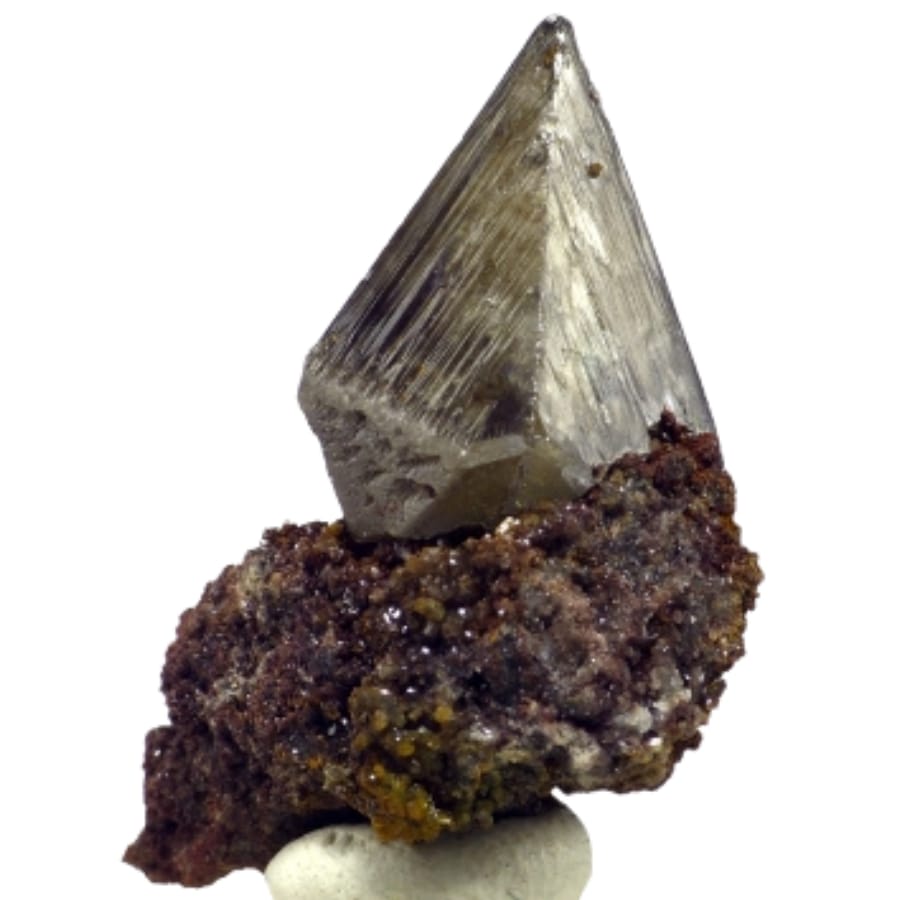
Cerussite is a special and interesting mineral that looks like shimmering diamonds. The most common colors are white, gray, and light blue.
It shines like tiny gems when it reflects light, which is one of its coolest features. It usually turns into crystals that look like glass, and these crystals can be very fragile.
The word “cerussite” comes from the Latin word “cerussa,” which means “white lead.” This name makes a lot of sense since cerussite is a lead rock with a lot of lead.
It’s made up of galena, another type of lead material. Once galena is out in the air with oxygen, it changes over time and turns into cerussite. Usually, cerussite is found at the top of lead ore layers. This is where air can reach it and change it.
The stone cerussite is very pretty, but it’s not often used in jewelry because it breaks a lot. Gemstone lovers still like it because they like the way it looks and sparkles.
Aside from being interesting to collectors, cerussite is useful in the mining business. Lead is a useful metal that is used to make shields against radiation, batteries, and even houses. Even though you might not see cerussite in a ring or chain, it’s a very important metal-making part.
Where you can find Cerussite in Kentucky
You can find cerussite in the following places across the state:
- Big Four Fault
- Columbia Mine
- Halls Gap
- Hickory Cane Mine
Chalcedony
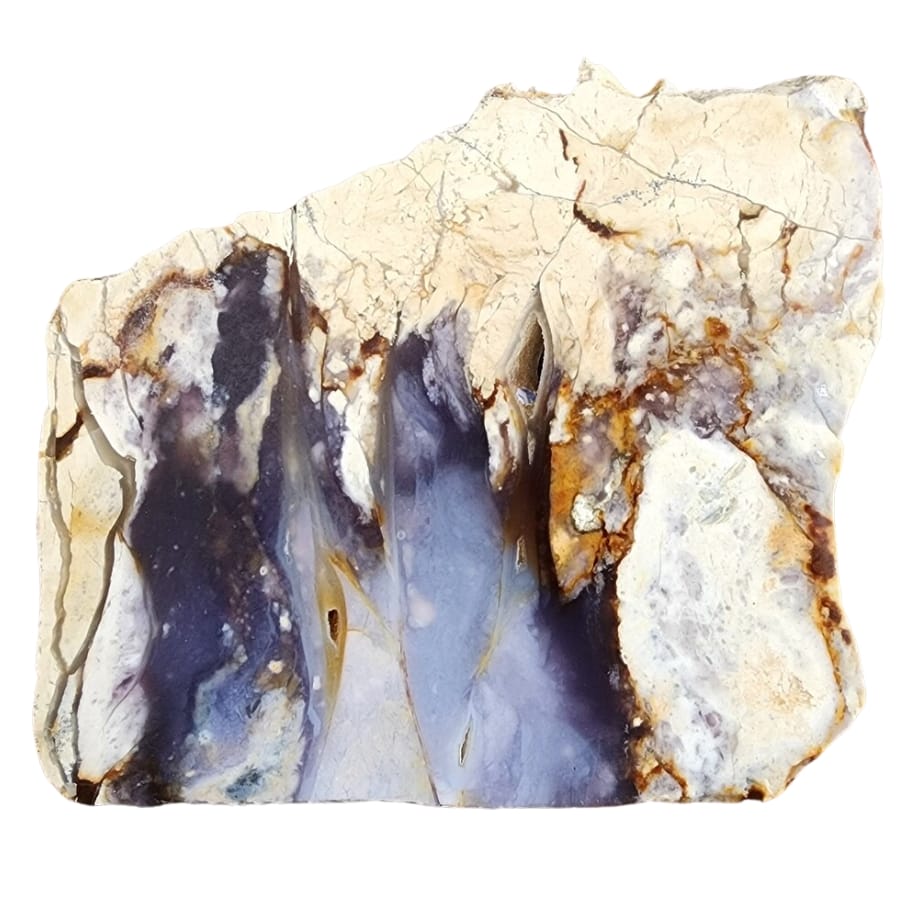
Chalcedony is a fascinating gemstone that is related to quartz. It stands out because it has a shiny sheen and comes in many colors, such as blue, pink, red, and green.
Instead of being clear like quartz, chalcedony looks more dense or slightly see-through, making it harder to see through. It’s made up of very small crystals that you can’t even see with your eyes. This makes it smooth and almost creamy.
The name “chalcedony” comes from a cool story. It’s thought to have come from Chalcedon, a Turkish town from long ago. People have known about and used this stone for a very long time, even in the past.
Over the years, chalcedony has been valuable for many reasons. A lot of people use it to make jewelry because it can be cut and shaped into pretty patterns, and it comes in a lot of different colors.
It has been carved and used to make trinkets and jewelry because it’s not too hard to work with but still strong. In the past, people even made tools and weapons out of it.
Where you can find Chalcedony in Kentucky
Chacledony can be found in the following places across the state:
- Halls Gap
- Mayfield area clay pits
Garnet
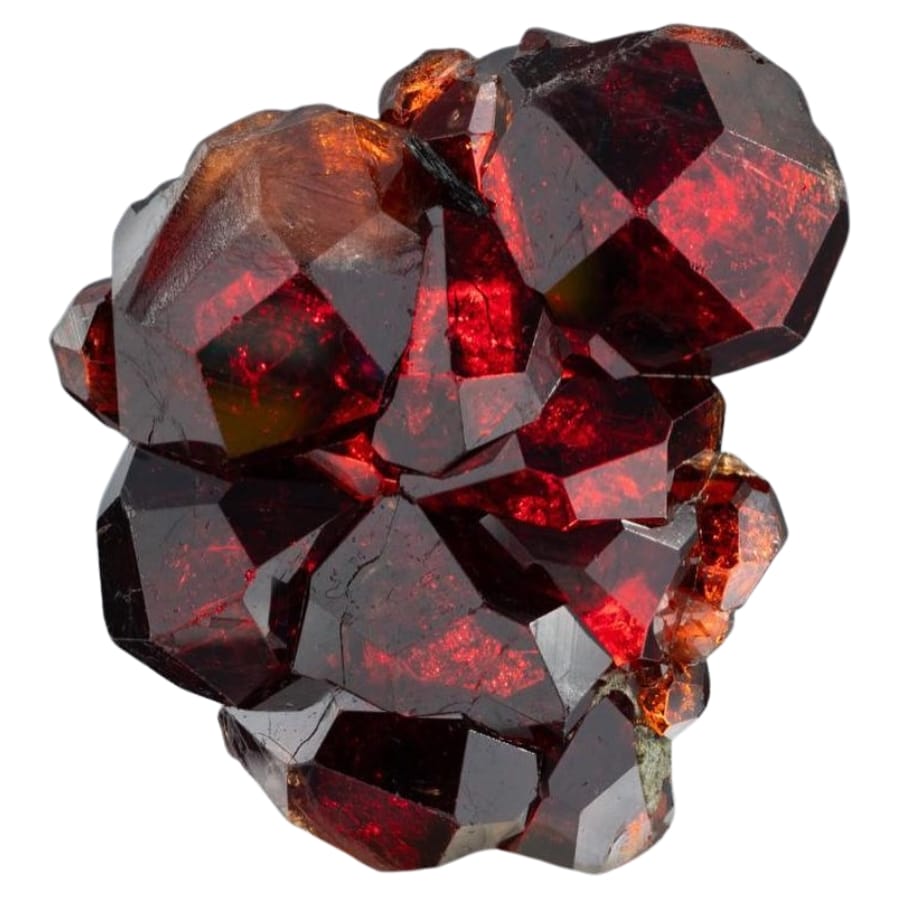
Garnet is an interesting rock that is usually a deep red color. However, it can also be green, orange, or even purple. The unique thing about garnet is that it shines like glass and sparkles when light hits it.
It’s common to find these gems in small, round crystals. They are pretty hard, so they don’t scratch easily.
“Garnet” comes from the Latin word “granatum,” which means “pomegranate.” This is because red garnets look a lot like the seeds of a pomegranate. It can form in a number of different natural situations.
Most of the time, it’s found in metamorphic rocks, which are rocks that have been changed by very high temperatures and pressures deep inside the Earth.
It can also be found in igneous rocks, which are made from lava that has cooled, and sedimentary rocks, which are made from sand, mud, and other things that have been pressed together.
Garnets have been valuable to people for a long time, not just because they are pretty. They’re often used to make rings, bracelets, and earrings because they look good and last a long time.
They are also very useful in other ways. In the workplace, they are used as abrasives, like in waterjet cutting and as sandpaper.
Where you can find Garnet in Kentucky
The following places in the state are where you can find garnets:
- Cold River Mining
- Ison Creek
- Little Sandy River
- Mount Vernon
Jasper
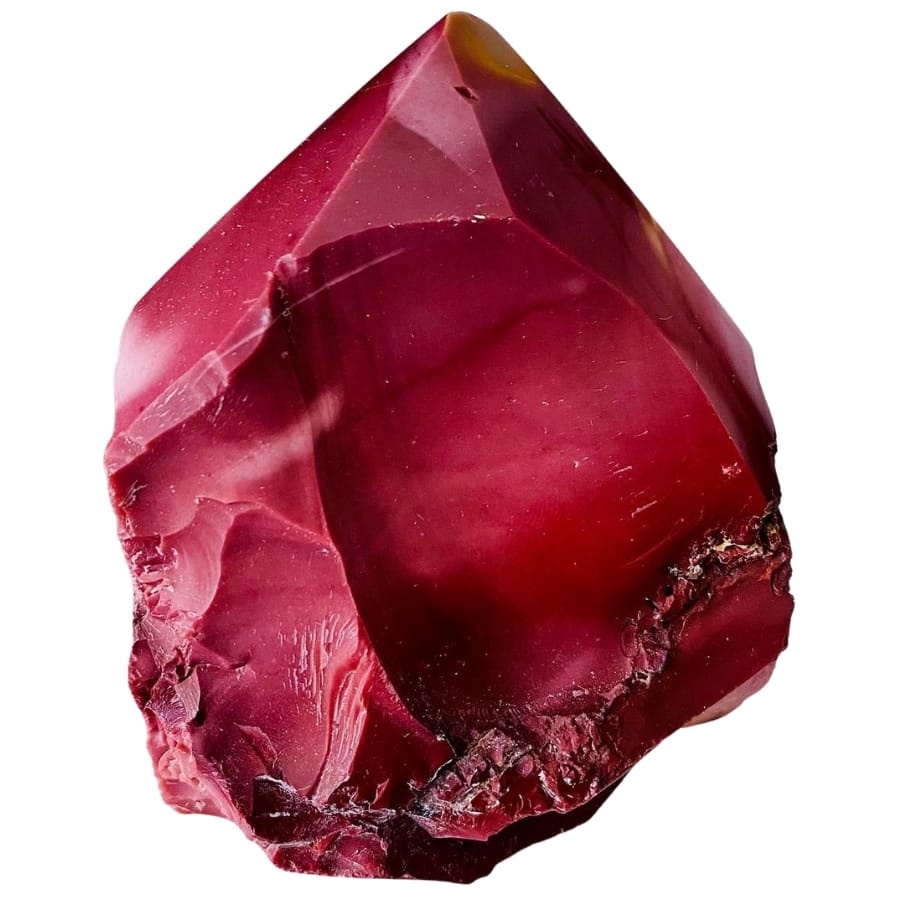
The beautiful colors and shapes of jasper make it a very interesting rock. Usually, people see it in red, brown, yellow, or green.
Amazingly, every piece is different; each has its own shapes, lines, or spots. It’s a kind of quartz, but unlike the clear, sparkly quartz crystals you might have seen, jasper is opaque, which means you can’t see through it.
One Greek word for “jasper” means “spotted stone.” When you see all the different patterns, this makes a lot of sense. Some types of material, such as mud, sand, and small rocks, stick together over time and turn into jasper.
Some places in the world where it can be found have had volcanic action.
For a long time, people have loved jasper because it’s both pretty and strong. Because it can be carved into different shapes and polished to a nice shine, it has been used to make necklaces and bands.
But jasper isn’t just used to make things look good. People used to make weapons and tools out of jasper because it’s so strong. It’s still used a lot for cutting and making crafts today.
Where you can find Jasper in Kentucky
These places in the state have jasper minerals:
- Hays Crossing
- Kentucky Lake
- Mount Vernon
- Wickliffe area
Quartz
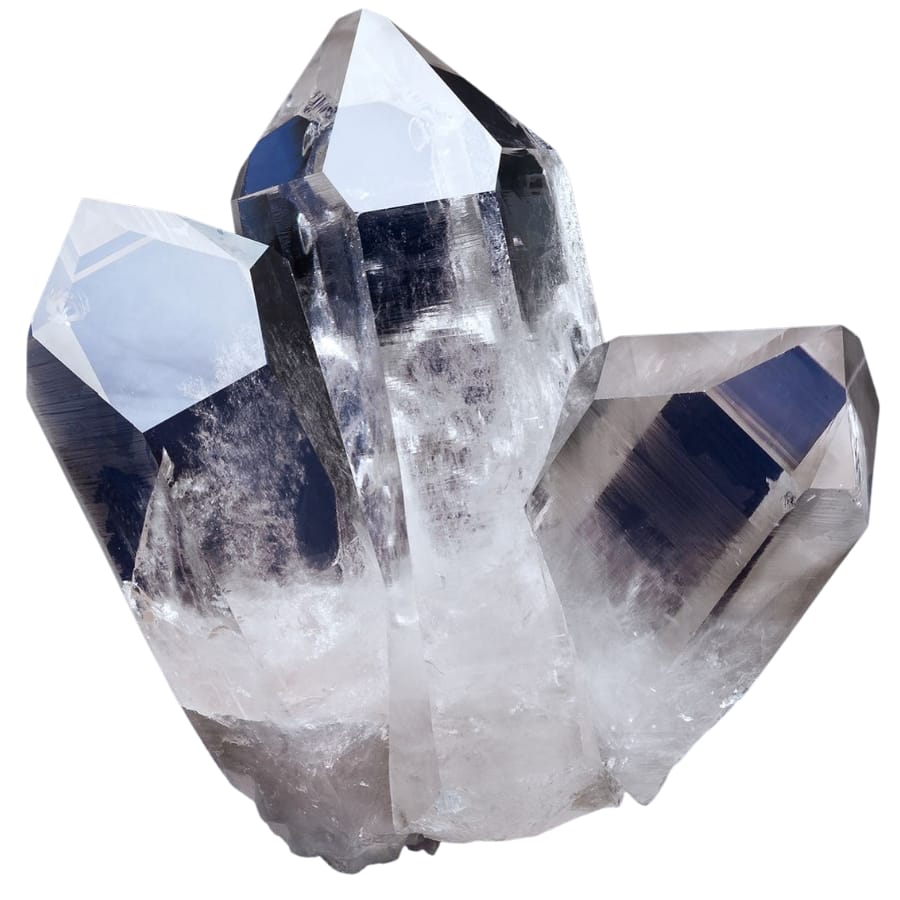
Quartz is a very interesting material that is found all over the world and is very well known for it. It’s known for being very hard and clear, but quartz can be many colors, including pink (rose quartz), purple (amethyst), and even black (smoky quartz).
Most quartz crystals have six sides, and they come in a wide range of sizes, from very small bits to big crystals that you can hold in your hand.
The word “quartz” comes from a German word, but no one is sure where it came from. Some people think it might have something to do with the German word “quarz,” which means “hard.”
Solids that are high in silica cool down and make quartz deep in the Earth’s crust. It’s also in metamorphic rocks, which have been changed by heat and pressure, and in sedimentary rocks, like sandstone.
Quartz is worth a lot because it’s often used to make jewelry and home decor like statues and vases. It’s also used to make watches and clocks because it helps keep time accurately.
Due to its ability to send and receive electricity, it’s found in radios, sensors, and even computer chips. It’s also an important part of many modern technologies!
Where you can find Quartz in Kentucky
You can find a lot of quartz in Kentucky in places like these:
- Big Four Fault
- Dyer Hill Fluorspar Mine
- Ellis Mine
- Kings Mountain
- Morton Branch
The Crystals Found In Kentucky
People who like crystals and gems will find a lot of them in Kentucky that are extremely valuable. Our detailed article tells you where to find crystals in Kentucky:
Celestite
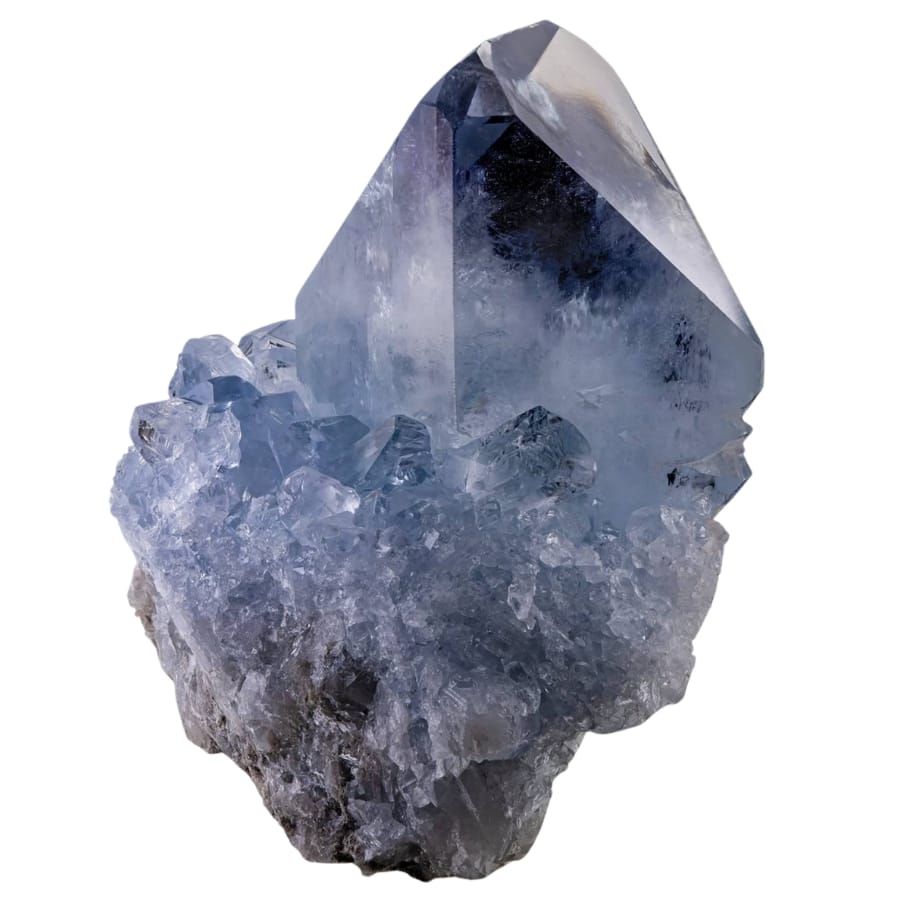
Celestite is a lovely crystal that gets its name from the pretty blue color it has, which can be light to sky blue. It can also be clear, white, or even pale pink sometimes.
It’s made up of crystals that can be very big and look like glass. Under ultraviolet light, celestite glows with a soft light that makes it look even more magical.
The word “celestite” comes from the Latin word “caelestis,” which means “heavenly.” The name comes from the color, which is very blue and makes people think of the sky.
It’s found in sedimentary rocks, most often in places with lots of fossils. If sea water evaporates, it can also form. Because of this, it’s often found in salt mines and near hot springs.
The beautiful blue color of celestite is what draws people to it. It’s often put in jewelry and used as a home art item. Cerise is used to make fireworks, as well as being pretty.
Strontium, which is found in the element, helps fireworks shows make bright red colors. Celestite isn’t as common as some other crystals, but people love it because of its unique color and many uses.
Where you can find Celestite in Kentucky
In Kentucky, you can find celestite at these places:
- Halls Gap
- Kings Mountain
Fluorite
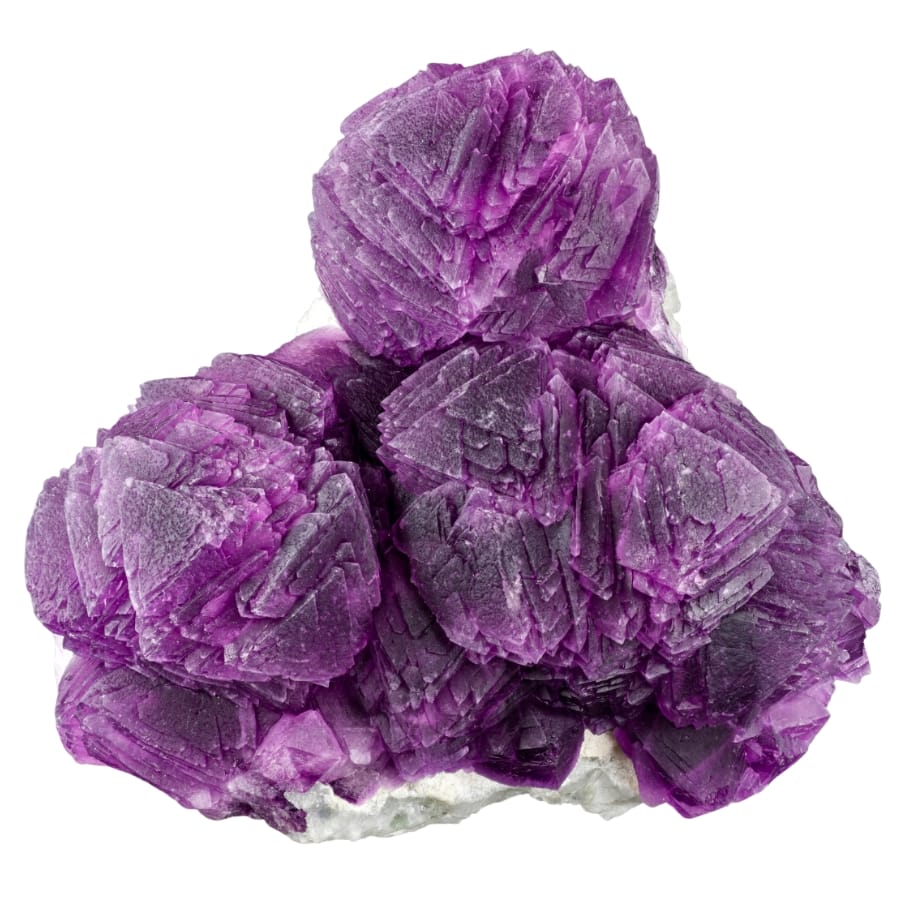
Fluorite is a cool element that stands out because it comes in so many colors. One gem can be purple, green, blue, yellow, or even a mix of these colors!
When it forms, it often does so in cubes or other geometric shapes. Its surface is shiny and looks like glass. Under UV light, this mineral can glow, making it look lit up from the inside.
“Fluorite” comes from the Latin word “fluere,” which means “to flow.” This name was chosen because fluorite makes metals by lowering their melting point. This makes the metal move better.
It forms in deep underground places with a lot of heat and pressure, like near volcanoes. It can also be found in rocks warmed by the sun.
Fluorite has been valued for a long time, both for its beauty and for its useful properties. People like to wear and collect it because of its bright colors and clear diamonds.
Because it helps focus light so well, it is also used to make camera and binocular lenses. It turns out that fluorite is more than just a pretty stone; it’s also useful in science and making things.
Where you can find Fluorite in Kentucky:
Fluorite is abundant in Kentucky, notably in the following areas:
- Ellis Mine
- Gratz Mine
- Morton Branch
- Ohio River
- Pygmy Fluorspar Mine
Galena
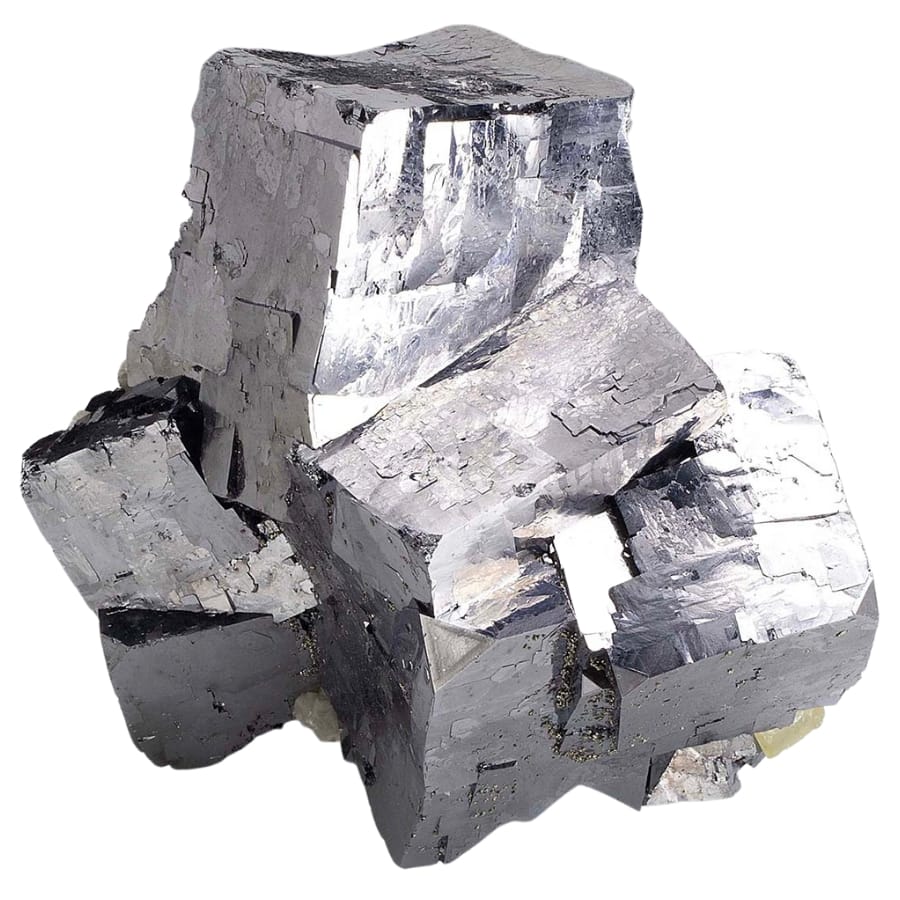
Galena is an interesting material that is best known for being the main source of lead. It’s usually a silver or bluish-gray color and looks like metal. It’s very heavy for its size, and it comes in cube or rectangle shapes.
It’s also pretty soft and simple to scratch. That galena sparkles in the light is one of the coolest things about it.
Romans called lead rock “galena,” which is where the name “galena” comes from. Galena is a lead sulfide material, which makes sense since it has a lot of lead. Most galena forms in places with hot fluids that are high in minerals.
These fluids come from deep inside the Earth and carry what galena needs to form. People often find it in sedimentary rocks like limestone, but sometimes they also find it in rocks that were formed underwater.
Galena has been valuable for a very long time because it’s the main source of lead. Lead is used to make many things around us, like batteries, bullets, and even houses.
Where you can find Galena in Kentucky
Kentucky is rich in galena minerals, particularly in the following areas:
- Big Four Fault
- Crittenden Springs Fault
- Dyer Hill Fluorspar Mine
- Gratz Mine
- Ohio River
Hematite
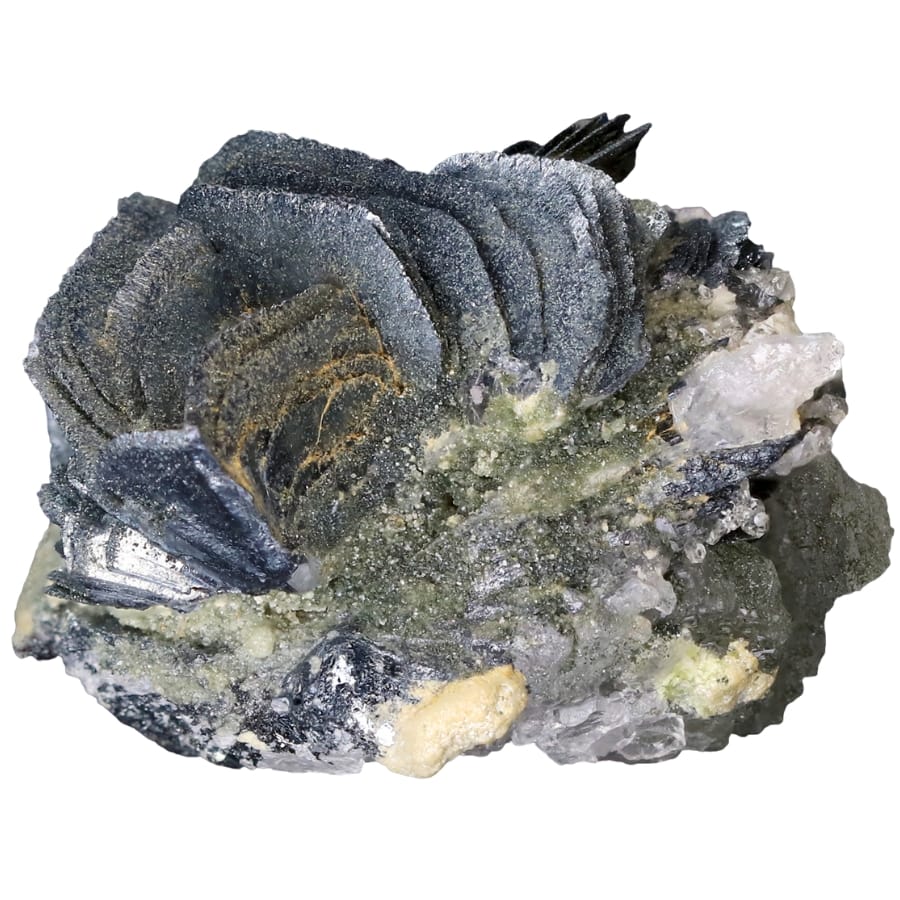
With its shiny, metallic surface and reddish-brown color, hematite is a really fascinating gemstone. It feels strong and heavy when you hold it.
Different types of hematite can be found, but most of the time it’s smooth, round, or flat, shiny plates. It’s interesting because, even though it looks like metal, it is not magnetic when pure.
“Hematite” is named after the Greek word “haima,” which means “blood.” It turns red, like blood, when you scratch it or crush it into a powder, which is why it has this name.
Even though hematite can form in many places, it’s most often found near hot springs or bodies of water that don’t move. Also, it can happen when a volcano erupts.
Besides being used in the steel and iron business, hematite is often found in jewelry and as a stone for decoration. It can be polished to make necklaces, bands, and other jewelry out of it.
Therefore, hematite is not only a lovely rock, but also a useful substance for creating everyday items.
Where you can find Hematite in Kentucky
Kentucky has several hematite minerals, particularly in the following areas:
- Hard Money area
- Owingsville iron mines
Pyrite
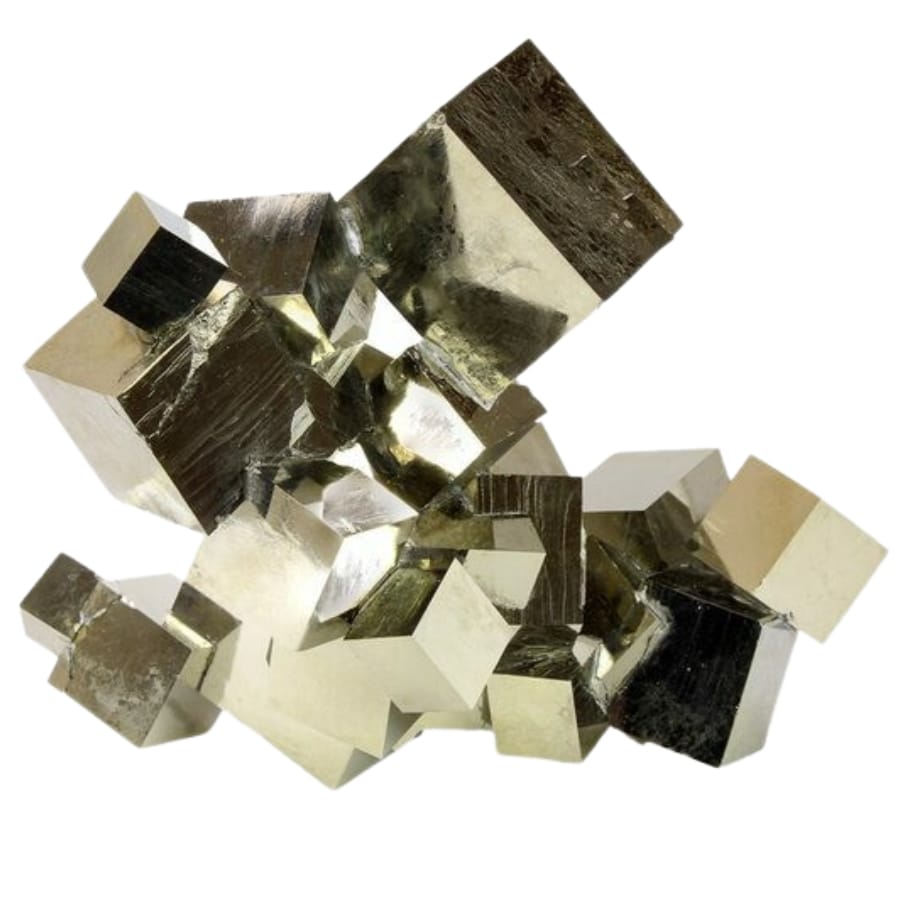
Pyrite is a fascinating mineral that is sometimes called “fool’s gold” because it looks a lot like real gold. It’s a brassy yellow color and comes in cool shapes like spheres and cubes.
Most of the time, it’s easy to tell apart from real gold because it’s harder and lighter. Plus, it’s less strong than gold, so it breaks more easily.
“Pyrite” comes from the Greek word “pyr,” which means “fire.” The reason for this is that it can spark when it hits metal or another hard substance. There are different ways that it can form.
It can be found in sedimentary rocks like shale, where it comes from organic matter breaking down. Iron-rich rocks, like granite, and rocks that have been changed by heat and pressure are also places where pyrite can be found.
Pyrite has been valuable to people for a very long time. It’s still very valuable even though it’s not gold. Sulfuric acid is important in many industrial processes and is made from pyrite. Paper, rubber, and paint are all also made from it.
Besides its useful properties, it’s a popular crystal among mineral collectors because it looks cool and shiny. People also use it to make jewelry and decorate their homes.
It adds a little sparkle to everything from statues to earrings. Pyrite is a pretty cool material that can be used for many things, even though it’s not real gold.
Where you can find Pyrite in Kentucky
It’s easy to find it in the state, especially in these areas:
- Ohio River
- Old Jim Mine
- Pygmy Fluorspar Mine
Smithsonite
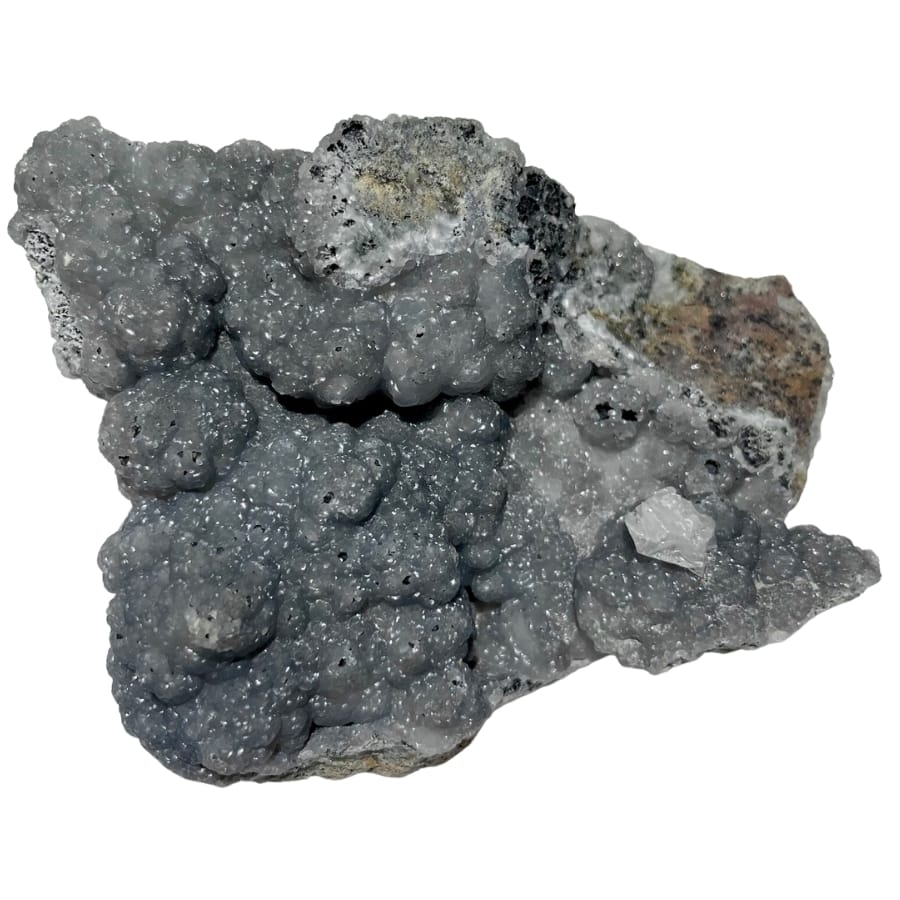
Smithsonite is a one-of-a-kind crystal with a smooth surface that can be blue, green, pink, or even colorless. It looks very pretty because it often looks like pearls or glass. It can also take on interesting shapes.
It often comes in round or botryoidal forms, which make it look like a bunch of grapes.
A scientist named James Smithson started the Smithsonian Institution, and the name “smithsonite” was given to honor him. It’s found on top of zinc ore reserves.
It’s made when zinc comes in contact with carbon dioxide in water and the air. It’s called “weathering,” turning the zinc rock into smithsonite. Some of the best places to find it are where metals like zinc have been mined.
There are several reasons why people like smithsonite. Mineral fans like it because it comes in many colors and has a shiny surface. It’s not usually used to make jewelry because it’s very soft and easy to scratch, but people still love its beauty.
It’s useful in mining and makes nice things to collect. Zinc can be found there, and zinc is a metal used to make alloys, coils, and batteries.
Where you can find Smithsonite in Kentucky
You can locate smithsonite in these parts of the state:
- Big Four Fault
- Columbia Mine
- Hickory Cane Mine
- Old Jim Mine
The Most Valuable Rocks and Minerals in Kentucky
Let’s talk about the state’s most valuable rocks now. If you can find these rocks and minerals, then it will be worth the hunt!
Kentucky Agate
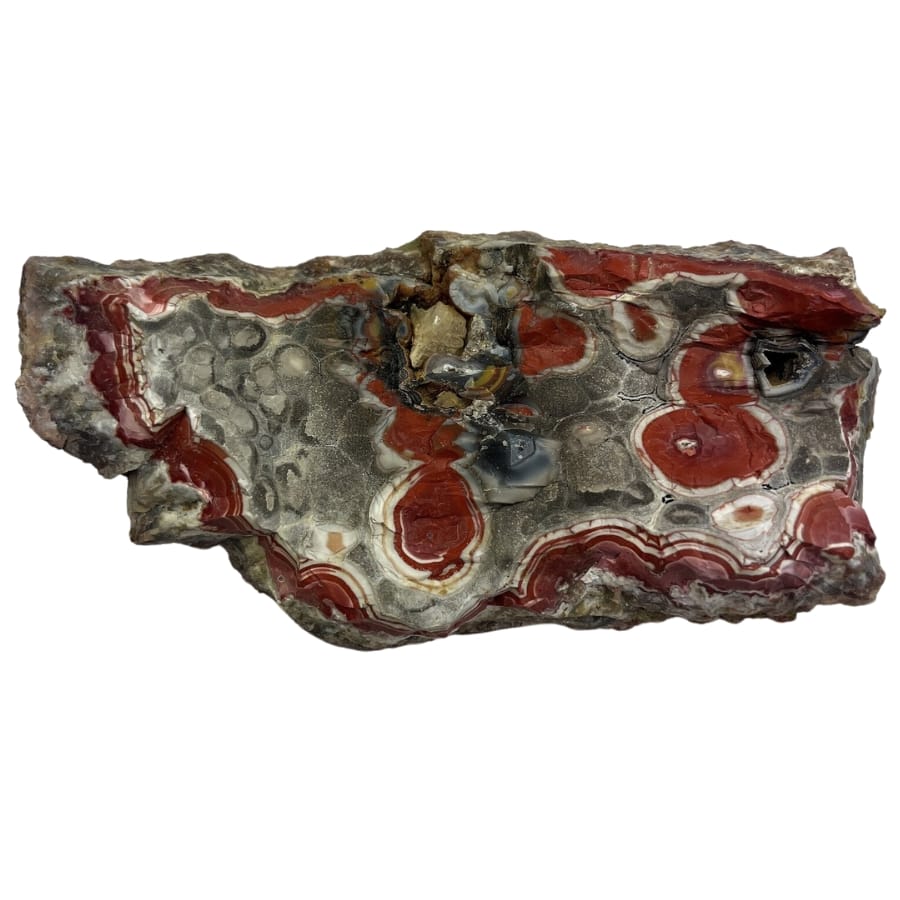
Kentucky agate is a really special kind of stone that’s found, you guessed it, mainly in Kentucky! It’s the state rock of Kentucky. What makes it stand out are its stunning colors and patterns.
It usually has layers of different colors like red, black, yellow, and white, all swirled together in beautiful, natural designs. Each piece is unique, making it a real treasure for anyone who finds it.
The name “agate” comes from the ancient Greek word “Agate?” which referred to a stone found in a river in Sicily. Kentucky agate formed millions of years ago during the Mississippian period.
It’s created when silica from volcanic activity gets deposited in rock cracks and spaces. Over time, this silica turns into agate, layer by layer.
People value Kentucky agate for several reasons. Its beautiful, unique patterns make it a favorite among collectors and artists. It’s often cut and polished to make jewelry like pendants, earrings, and rings.
Kentucky agate is also popular among locals and visitors who enjoy hunting for it as a hobby.
Where you can find Kentucky Agate in Kentucky
You can find Kentucky agate in the eastern part of the state, especially around the Red River Gorge and Kentucky River.
Coal

Coal is an old solid fuel used to make energy for a long time. You can find it on the ground all over the world. It’s black or chocolate brown.
It’s made from the dead plants that lived in swamps long ago. These plant parts were buried under water and dirt over time. These pieces were put under a lot of heat and pressure for millions of years, which turned them into coal.
“Coal” comes from the Old English word “col,” which means “charcoal.” Layers form over millions of years, and the weight and heat of the rocks turn the plant matter into coal. The name for this process is “coalification.”
Coal is important since it’s a main source of energy. In many parts of the world, it’s burned to make heat and energy. Power plants use coal to make energy. In some places, people also heat their homes with coal.
Besides that, it’s used to make steel and cement. But burning coal produces a lot of waste, like gases that are bad for the environment.
So, many places are trying to reduce coal use and find better energy sources. But coal is still a big part of the world’s energy mix.
Where you can find Coal in Kentucky
In Kentucky, coal is primarily found in two major areas: the Eastern Kentucky Coalfield and the Western Kentucky Coalfield.
Freshwater Pearls
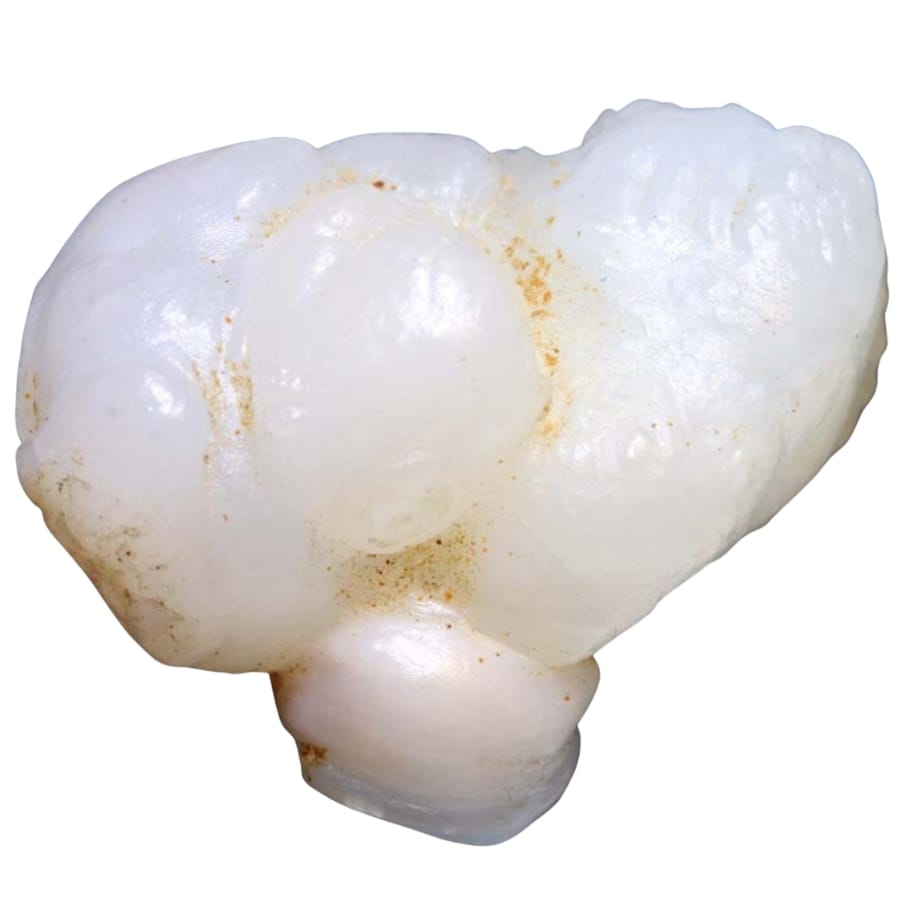
Freshwater pearls are bright and beautiful gems from mussels that live in rivers and lakes instead of the ocean. Mussels are like clams. Some of these pearls are purple, some are pink, and some are white. They’re not always round, though.
The word “pearl” comes from the old French word “perle,” which in turn comes from the Latin word “perna,” which means “leg.” This refers to the piece of the mussel shell that looks like legs.
When a tiny piece of sand or something else small gets inside the mussel’s shell, it turns into a pearl. Nacre is a shiny material that the mussel covers this little irritant with. This builds up over time to form a pearl.
Freshwater pearls have been loved for a long time because they are pretty and one-of-a-kind. They are used to make chains, bracelets, earrings, and other jewelry.
People often think of pearls as signs of beauty and class, usually worn at weddings and other special events. They also don’t need to be cut or cleaned to look beautiful.
Where you can find Freshwater Pearls in Kentucky
You can mostly find freshwater pearls in the following locations in the state:
- Mississippi River Valley
- Tennessee River Valley
How to Identify The Rocks and Minerals You Find
Figuring out the difference between rocks and minerals is vital for many reasons. Nature is beautiful and varied, and people use it to learn about a place’s geological history and discover how essential mineral reserves might be.
Some minerals are so different that it can be hard to tell what kind they are. Being able to observe, know how things are made, have good tools, and sometimes try out new ones are all things you need to do.
Examine mineral appearance
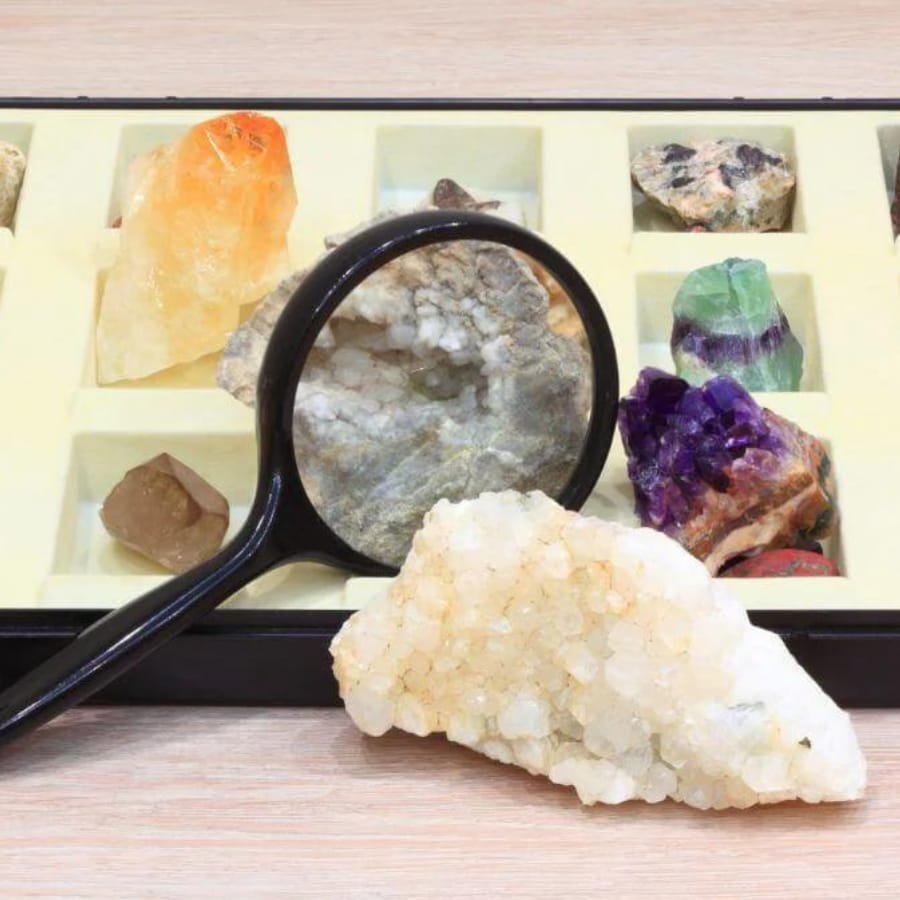
First, take a good look at the rock or mineral. Note its color and look for any patterns, stripes, or spots. The appearance of the surface is also important. Check if it’s shiny, smooth, or irregular.
The texture can give you clues about its formation and composition. For example, smooth and shiny surfaces are often found in gems, while rough textures are more common in sedimentary rocks.
Look for transparency. Some minerals are transparent (like quartz), others are translucent (like opal), and many are opaque (like granite).
Some crystals have very distinct shapes (like the hexagonal columns of quartz), while others may be more irregular. The way the crystals are arranged in the rock is also important.
Remember that you should be careful not to damage rocks, gems, and minerals when you look at how they look. Each characteristic you notice can help you determine what it is and how it was made.x
Do a hardness test
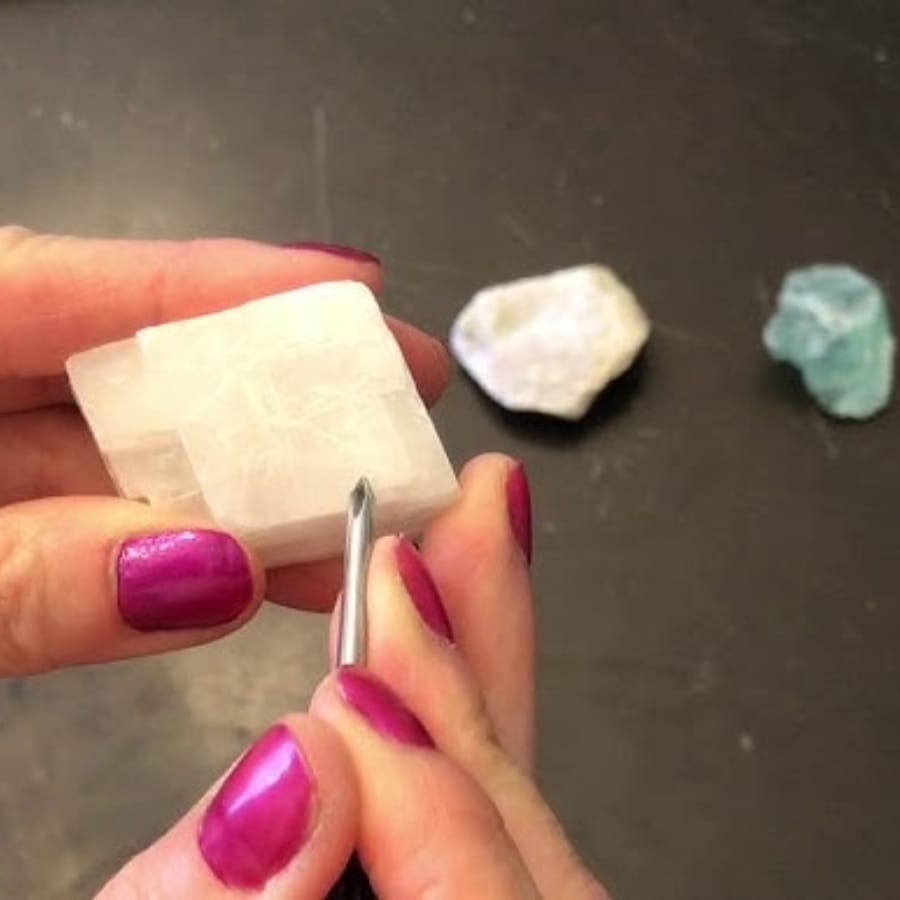
A great way to learn more about a rock, gem, or material is to put it through a hardness test. The natural hardness scale from Mohs ranges from 1 (softest) to 10 (hardest). This test is based on this scale.
Familiarize yourself with the Mohs scale. Some common items you can use for testing are your fingernail (hardness of 2.5), a copper penny (around 3.5), a steel nail or glass (around 5.5), and a ceramic tile (around 6.5).
Try scratching the mineral with your fingernail. The mineral’s hardness is less than 2.5 if it leaves a mark. If not, try the copper penny next.
If the penny scratches the mineral, its hardness is less than 3.5. If the penny doesn’t scratch the mineral, move on to the steel nail or a piece of glass.
Gently try to scratch the glass with your mineral. If the mineral scratches the glass, its hardness is more than 5.5. If not, it’s softer. Do the same with the steel nail.
Some minerals can have variable hardness due to impurities or weathering. Also, remember that some softer minerals can leave a color streak on a harder material, which might look like a scratch.
Be careful when performing these tests. Some minerals can splinter or break, which could be dangerous.
Check magnetism
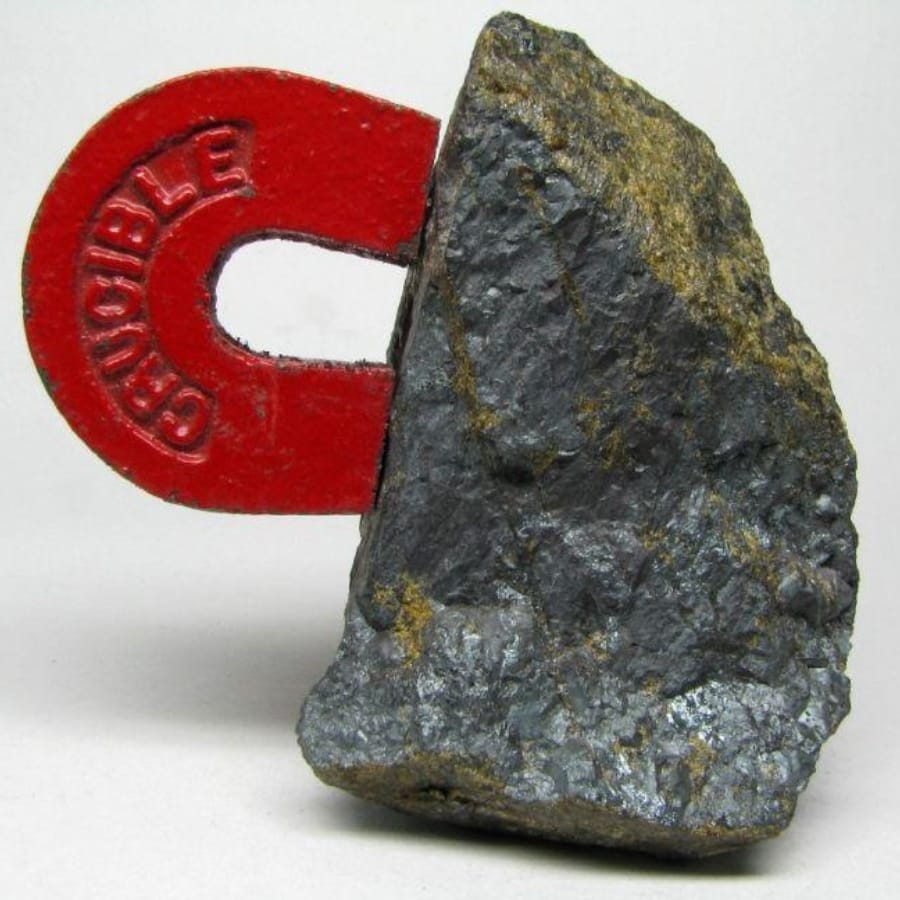
Checking the magnetism of a rock, gem, or mineral is a straightforward process, but it’s important to do it correctly to get accurate results.
A regular fridge magnet might not be strong enough, so using a stronger magnet like a neodymium magnet is better. These are more powerful and can detect even weak magnetic properties in minerals.
Ensure the magnet and the mineral are clean and free from dust or small metal particles. This ensures that any attraction you notice is due to the mineral’s properties, not just something stuck to its surface.
Slowly move the magnet towards the mineral. You don’t need to touch the mineral with the magnet; just bring it close enough to see if there’s any attraction. Be gentle to avoid damaging the mineral.
Watch for any movement in the mineral as you bring the magnet close. If the mineral moves towards the magnet or vice versa, it indicates magnetic properties.
Some minerals will show strong magnetism, while others might only be slightly attracted.
Use a field guide
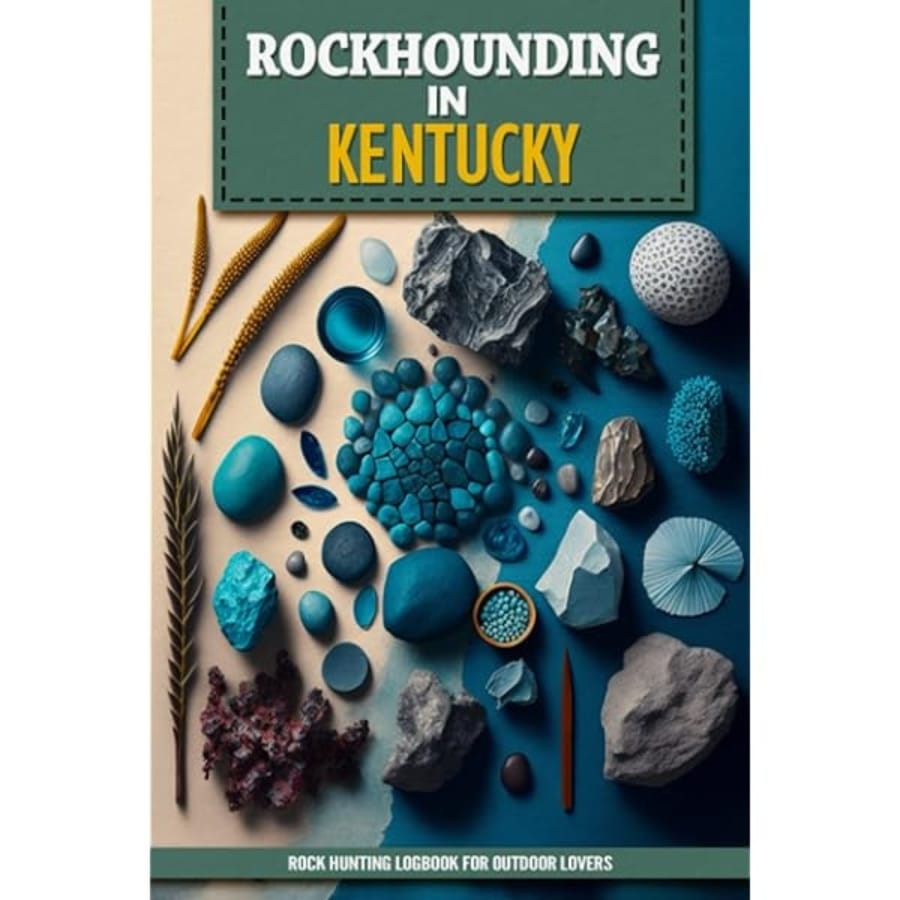
Choose a field book that is written about the area where you found the mineral, gem, or rock. Geological features vary from place to place, so a guide from the area can be very useful.
Ensure the guide has clear pictures or photos, captions, and maybe even a key to help you figure out what something is.
Take a good look at the thing you want to name before you open your field guide. Take note of its color, structure, hardness, shine, and anything else that makes it stand out. If it’s a rock, look at its different crystals and their arrangement.
Many field guides have an identification key. This is a step-by-step tool that helps you narrow down the possibilities based on the characteristics of your specimen. Follow the key’s questions or prompts, comparing them to your specimen.
Use the photographs or illustrations in the guide to compare with your specimen. Look for similarities in color, shape, and texture. Remember that some variation is normal, as not all specimens will look exactly like the pictures.
While field guides are extremely useful, they might not cover every possible specimen, especially if you’ve found something very unusual.

